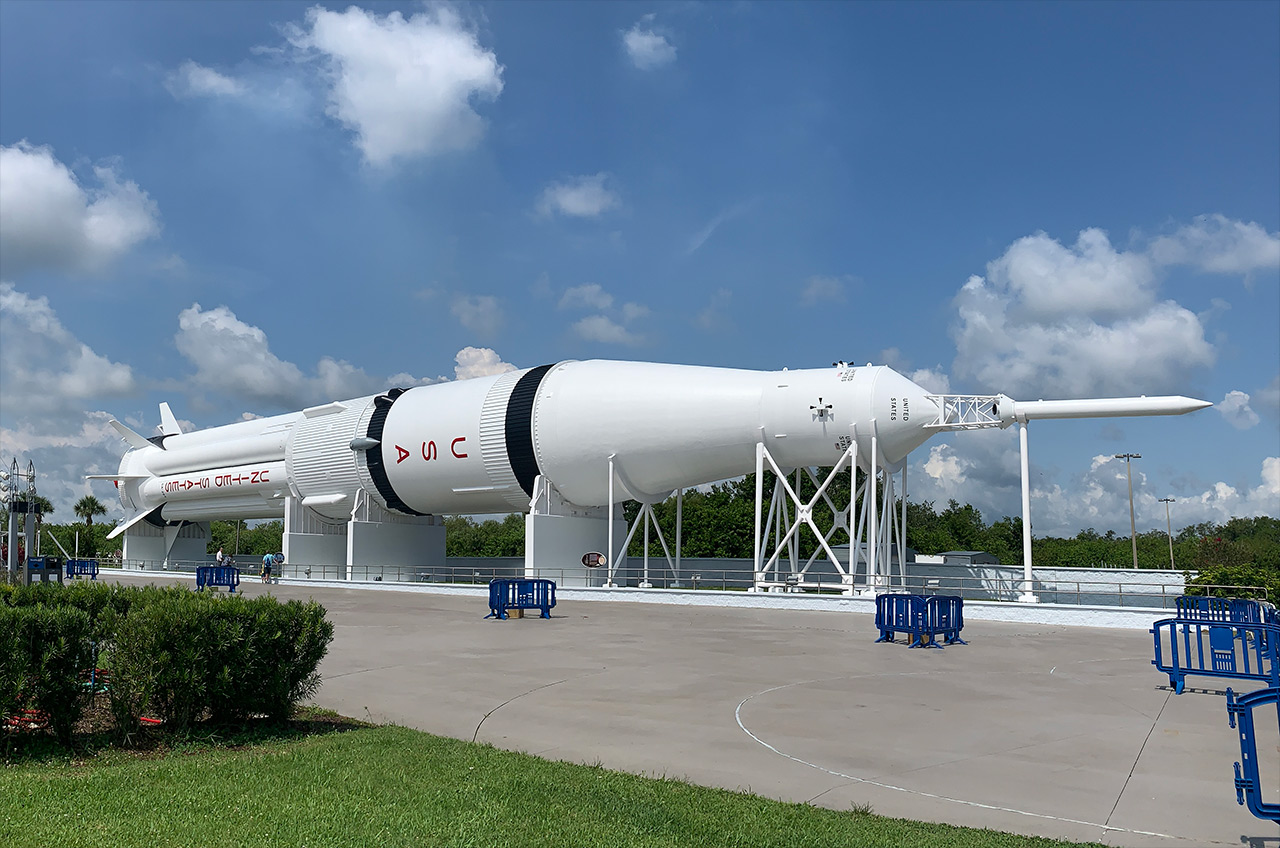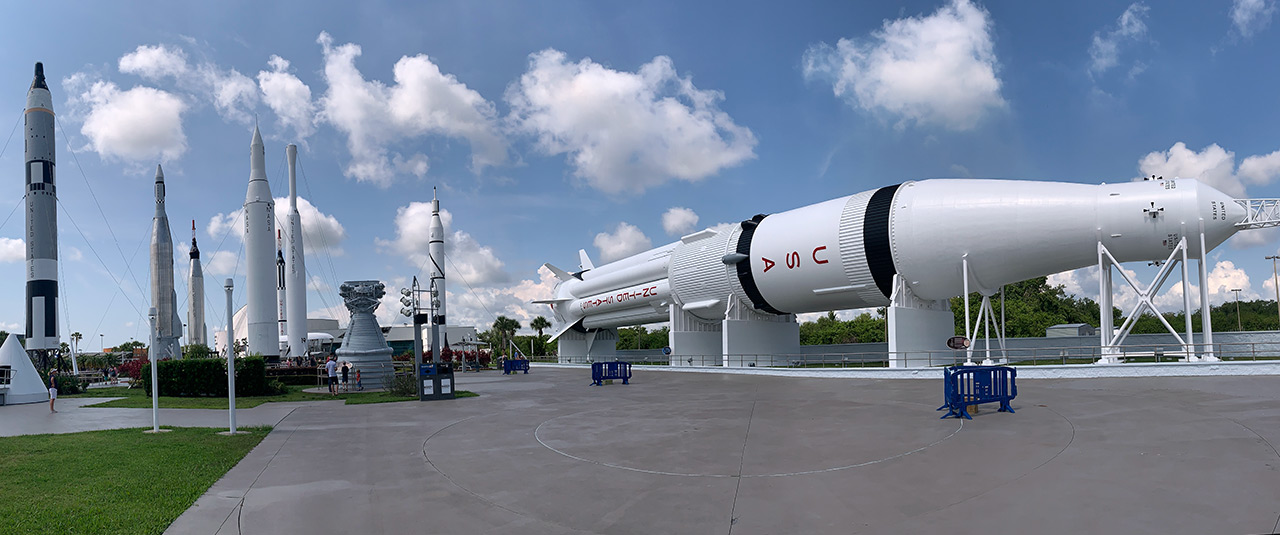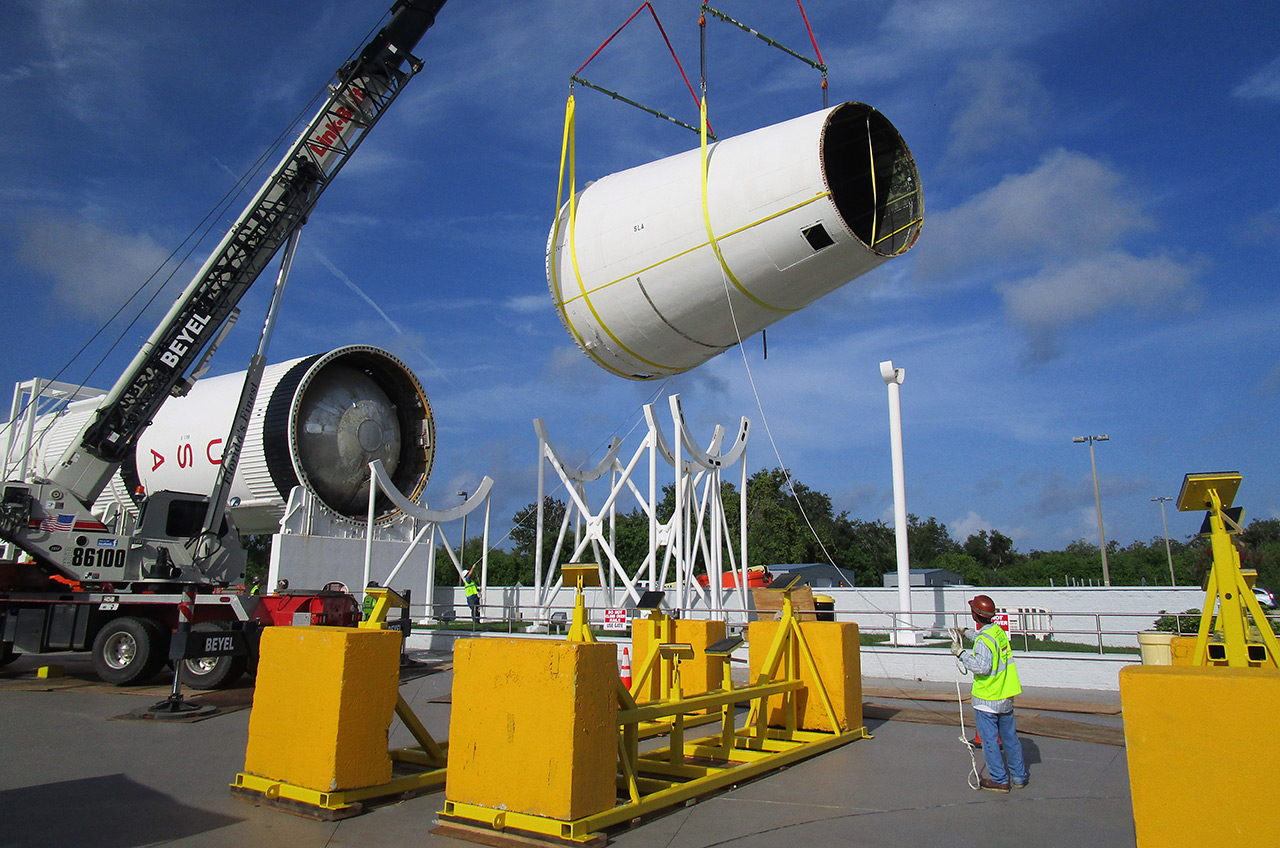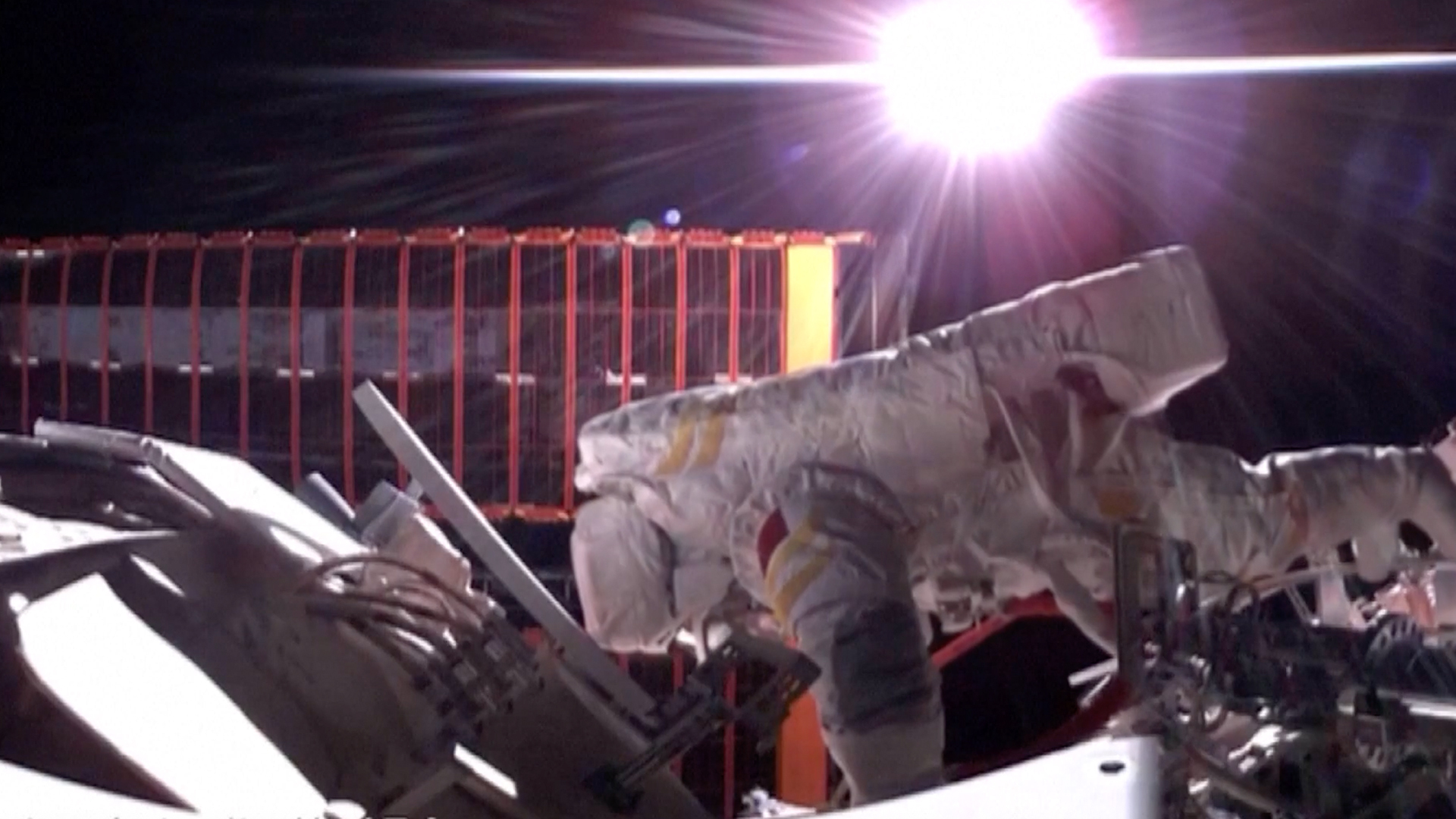Fully Restored, Apollo-Era Saturn IB Rocket Returns to NASA Display

NASA's last flight-configured example of the rocket that launched the first Apollo astronauts into space is back on public view, having undergone an almost year-long, extensive restoration.
Construction walls spanning the length of the Rocket Garden at Kennedy Space Center Visitor Complex in Florida were recently taken down, revealing the mostly original, historic Saturn IB booster on display. The forerunner to the Saturn V that launched astronauts to the moon, the Saturn IB was first used by NASA's Apollo 7 crew in October 1968.
"We actually finished a little bit early," said Jennifer Mayo, senior manager of exhibits and artifacts for Kennedy Space Center Visitor Complex, in an interview with collectSPACE. "Our original planned finish date was going be in early July."
Related: Apollo 11 at 50: A Complete Guide to the Historic Moon Landing Mission
Work to restore the Saturn IB (pronounced "one-B") began in July 2018. The Space Coast's salt-rich atmosphere and 40 years lying on its side had taken a toll on the rocket, which once stood on a launch pad ready to fly a planned, but never-needed rescue mission to the United States' first space station, Skylab.
"This project was really unique. It was kind of like restoring an old house where you didn't really know everything about it going in," said Mayo. "Different stages of the rocket had different challenges."
One major concern was the rocket's "spider beam," an octagonal framework that holds the first stage propellant tanks together.
Breaking space news, the latest updates on rocket launches, skywatching events and more!
"That was really heavily deteriorated," Mayo explained. "The spider beam was so corroded that we had to entirely replace it."
Other areas of the rocket had fallen victim to intrusions.
"In areas where water had pooled, there was, obviously, corrosion, so there was a lot of patchwork that had to be done," said Mayo. "Wildlife had also infiltrated, so we had to make sure that we sealed up those areas."
Surprisingly though, not every part of the Saturn IB needed extensive work, said Mayo.
"The J-2 engine [on the second stage] that was entombed inside of the rocket was in remarkably good condition. I mean, it was really in beautiful condition," she told collectSPACE. "And the engine cowl covers that were from Rocketdyne looked like they had just been put on last week.
"The areas that were more tightly sealed were pristine. It was a surprise to see just how well some areas were preserved," said Mayo.
Over the course of the past year, the Saturn IB was completely disassembled so that "every nook and cranny" could be inspected and repaired as needed. Some of the work was done on site behind the construction walls, while the more extensive restoration required moving the stages to a dedicated work yard.
When all the pieces were back in place and fit together, the task turned to making sure that the rocket could remain on display for many years to come.
"Obviously, we know our [outdoor] environment isn't changing," said Mayo. "So we sealed the inside of the rocket to ensure that water and wildlife cannot get back in. And any areas that had dissimilar metals — because that can create reactions that lead to more deterioration — all of those areas were corrected.
"As for the paint on the outside, we took it down to its original material, because it did have a couple of layers of paint on it from [earlier touchups in the] years that have gone by. So, we took that off and put a really heavy duty paint system on the outside," she explained.
The visitor complex has now instituted an annual maintenance plan for the Saturn IB, so it can address any new instances of corrosion before it becomes a problem.
Mayo said the restoration has made it possible for the rocket to continue inspiring visitors for years to come.
"I believe that with our actions, we have added several decades onto the life of this rocket," she said. "Children of this generation, they're going be able to see this rocket in a much more magnified light and it's going to be lionized more, it's going to have more grandeur.
"It's going to have the prestige that it deserves," said Mayo, "and we're going to be able to tell the story of the rocket a lot better."
NASA contracted Conservation Solutions of Maryland and Guard-Lee and Ivey's Construction of Florida to carry out the restoration. The work was underwritten entirely by the proceeds from admission and concession sales at Kennedy Space Center Visitor Complex. The cost for the restoration has not been made public.
- Catch These Events Celebrating Apollo 11 Moon Landing's 50th Anniversary
- Reading Apollo 11: The Best New Books About the US Moon Landings
- Lego's Epic Apollo 11 Lunar Lander Set in Photos!
Follow collectSPACE.com on Facebook and on Twitter at @collectSPACE. Copyright 2019 collectSPACE.com. All rights reserved. The video in this story was provided by Rod Pyle.
Join our Space Forums to keep talking space on the latest missions, night sky and more! And if you have a news tip, correction or comment, let us know at: community@space.com.

Robert Pearlman is a space historian, journalist and the founder and editor of collectSPACE.com, a daily news publication and community devoted to space history with a particular focus on how and where space exploration intersects with pop culture. Pearlman is also a contributing writer for Space.com and co-author of "Space Stations: The Art, Science, and Reality of Working in Space” published by Smithsonian Books in 2018.
In 2009, he was inducted into the U.S. Space Camp Hall of Fame in Huntsville, Alabama. In 2021, he was honored by the American Astronautical Society with the Ordway Award for Sustained Excellence in Spaceflight History. In 2023, the National Space Club Florida Committee recognized Pearlman with the Kolcum News and Communications Award for excellence in telling the space story along the Space Coast and throughout the world.



